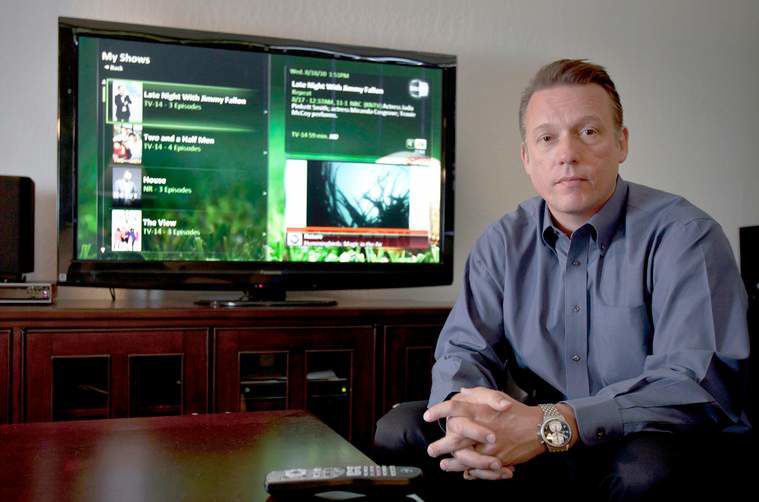Web-TV interface options growing
Published 5:00 am Tuesday, August 24, 2010

- Phil Wiser, co-founder and president of Sezmi, with a TV displaying the firm's user interface at Sezmi headquarters in Belmont, Calif. Startups and tech giants alike are offering what they say are easy ways to pipe shows and movies to a TV via the Internet.
If you want to watch Internet video on most televisions, you need a gadget that pulls it in. And more and more technology companies want to sell it to you.
Startups and tech giants alike are offering what they say are easy ways to pipe shows and movies to a TV, hoping to win over people who might want a cheaper or more interesting alternative to cable and satellite service.
Trending
These companies have a lot of convincing to do. Most people do not have the tech-savviness or the time to tackle the hardware and software setup these products often require. And the companies are not able to offer access to many shows and channels that are on traditional pay-TV, nor bundle services like phone-calling and Internet access at a discounted rate, as cable companies do.
Most products don’t require subscription
There are also several perks, beginning with the cost. Many of these products do not require monthly subscriptions, and those that do rarely cost more than $20 a month. And they try to make up for the lack of some programming by organizing the Internet’s offerings through an easy-to-navigate menu.
“People don’t want 400 overpriced channels,” said Phil Wiser, co-founder and president of Sezmi, a startup that thinks it has a shot at the big screen in the living room. “Consumers are ready to make a new decision about how they are paying for television.”
Sezmi, based in Belmont, Calif., offers a hybrid system that delivers content in several ways. The system, which sells for $150 at Best Buy, has a DVR and pulls in both over-the-air TV broadcasts and on-demand content from the Internet.
Others companies, like Boxee, think they can draw a sizeable audience without having to offer prime-time programming. Boxee’s free software pulls in online video from many sources around the Internet, including CNN.com. But the software requires viewers to watch on a computer, or hook the computer to a TV. In November the company will get around that problem by introducing a set-top box that runs its software.
Trending
Then there are companies that are taking a more symbiotic approach. Roku, for example, makes a slim black box starting at $70 that can wirelessly stream movies and television shows from Netflix and other sources, but does not aim to be a cable replacement.
“We’re more complementary, for people who are shaving down their cable services or trimming the breadth of what they get,” said Brian Jaquet, a spokesman for the company.
A service called Kylo, introduced in February, is gearing up for the coming wave of Internet-connected television sets with free software that allows users to search the Web for things to watch through a special browser on their television screens.
All of these services are relatively new, so most have not yet gained any significant traction. But analysts say that even the larger companies that are hoping to make inroads in this area have not found much success.
That is in part because many big media companies have been reluctant to make their best programming available online. That would give people fewer reasons to pay for expensive monthly cable and satellite services, which would in turn hurt the content companies.
The video site Hulu does not want people viewing its content on TV sets, so it has used technological means to block Kylo and Boxee users. Boxee has found ways to circumvent this. Hulu is a joint venture of the News Corp., the Walt Disney Co., NBC Universal and Providence Equity Partners.
Apple TV not a hit
Even Apple has struggled to gain traction with Apple TV, a $229 set-top box that is its attempt to bring its iTunes software and store to the heart of home entertainment.
“People love Apple, but we’ve seen a low adoption of their Apple TV,” said Jonathan Hurd, director of Altman Vilandrie, a Boston consulting firm that studies consumer media habits. “Set-up is a big factor. It’s typically more complicated than the average consumer is willing to put up with.”
There is speculation that Apple may be gearing up to take another shot at the market with a new device. And Google is diving in this fall. It has teamed up with several partners to develop its Google TV platform.
The Google software, which will pull together Web content and television channels in one programming guide, will be built into high-definition televisions made by Sony and set-top boxes from Logitech. It will be powered by a chip from Intel and by Google’s Android software, originally designed for smart phones.
Consumers might be more prone to making the Internet switch than they were a few years ago, Hurd said. According to a recent survey conducted by his company, fewer than 40 percent of viewers younger than 24 watch television during prime time. And the number of people watching television shows on the Internet has doubled in the past year.
“The biggest threat to the traditional companies is on-demand video,” said Hurd. “The opportunity is there for a new entrant to come up with a compelling slice of on-demand content.”








